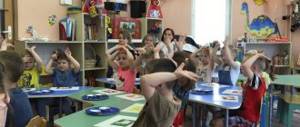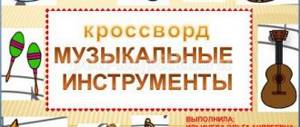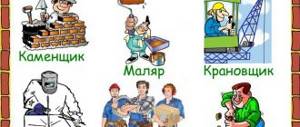Summary of GCD in the middle group “Russian Izba”
Summary of educational activities in the middle group “Russian Izba” Author: Kotova Irina Vladimirovna, teacher of MKDOU No. 7 in the village of Poldnevoy, Bogdanovichsky district, Sverdlovsk region. Description of the material: a summary of direct educational activities on the topic “Russian hut” for children of the middle group. This material may be useful to educators. This is a summary of an educational lesson aimed at introducing children to the culture of the Russian people. Goal: To introduce children to the traditional everyday culture of the Russian people. Objectives: Educational:
Introduce children to the Russian hut, to objects of ancient Russian life (stove, bench, spinning wheel, samovar, etc.);
Continue to introduce children to Russian folk games, proverbs, and sayings. Developmental:
Develop coherent monologue speech through oral folk art;
Develop communication skills with the help of folk games. Educational:
To cultivate interest in the traditions and customs of the Russian people, in Russian folklore.
Vocabulary work: grip, spinning wheel, rocker, cast iron, samovar, rug. Preliminary work : memorizing words for the game “At Uncle Tryphon’s”, reading Russian folk tales, looking at illustrations for them. Learning proverbs and sayings. Guessing riddles. Conducting Russian folk games and round dances. Equipment: “Russian hut” with household items (stove, benches, table, samovar, spinning wheel, rugs, grip, rocker, cast iron, etc.), Russian folk costume. Hello, dear guests. I invite you to a Russian hut, come in. In a village hut, the most important thing is the stove. Why do you think people need a stove?...(cook food, heat a hut...) That's right. In the old days, people cooked food in the oven, warmed themselves, and slept on the oven. Look - this is a cast iron pot, food was cooked in it. People in the old days loved porridge very much and even came up with sayings. — Cabbage soup and porridge are our food. - The porridge is good, but the cup is small. - Who remembers the sayings? (The teacher starts - the children finish) What kind of porridge do you like? ... Finger game “Magpie, magpie, cooked porridge” - But the cast iron in the oven is hot, and also heavy. Try it, hold it. — To get it out of the oven, you need a grip. See how to get a cast iron pot with a grip (show). Who wants to try? -What did you take out of the oven? - How did you get the cast iron? - Now guess the riddle. And it hisses and groans. The water is boiling quickly, He has eaten enough coals, So the tea is ready for us. The faucet on the belly opens and pours boiling water. (Samovar) That's right, it's a samovar. Tea was prepared in it. Examination of a samovar. In a Russian hut, rugs and rugs were laid on the floor. Beautiful, colorful. The rugs are rectangular and long, and the rugs are round. Examination. In the evenings, women sat down at the spinning wheel (display) and spun wool, sheep, goat, and dog. They pulled long threads and yarn from wool and rolled them with their fingers. And then they knitted socks and mittens. Examination. - Skok, skok-skok, the young blackbird walked along the water, carried the rocker. Yes, he stepped awkwardly and flooded the boot with water. I caught the bucket with my foot - Everything around was flooded. The blackbird got scared and took off running. People carried water from a well. And to make it convenient, they carried the buckets using a rocker. The rocker can be worn on one shoulder or on both (display). It was made of wood. Hooks were attached to the edges or recesses were made for buckets (showing illustrations of several types of rocker arms). Who wants to try carrying buckets? These are the utensils that were in the old Russian hut. Questions - Where was food prepared in the old days? (in the oven) - What did you cook the porridge in? (in a cast iron pot) - What did you lay on the floor? (rugs, rugs) - What was the tea used to prepare? (in the samovar) - Why do you need a rocker? (carry water) - What is the spinning wheel for? (for making yarn) Well done. Let's play . Russian folk game "At Uncle Tryphon's". Start a circle (the players walk in a circle, say words, the driver is in the center, at the end of the words the driver shows the movement, the children repeat, the driver chooses, who showed the best, becomes the driver). 1 time driving teacher. Then they choose a driver. Aty-baty, the soldiers were going, Aty-baty, to the market. Atty-batty, what did you buy? Aty-baty, samovar. How much does it cost? Aty-batty, three rubles Atty-batty, what is he like? Aty-baty, golden. “And Uncle Tryphon had seven children, Seven sons. They did not drink, did not eat, They looked at each other. At once they did as I did!” “We had fun, and now it’s time for our dear guests to say goodbye.”
We recommend watching:
Outline of GCD for children of the middle group. Wild animals GCD outline for children of the middle group. My Motherland Summary of GCD with elements of psycho-gymnastics in the middle group. A walk in the autumn forest Organization and opening of a museum of Russian life in a kindergarten
Similar articles:
Summary of lessons in kindergarten in the middle group. Profession rescuer
Lesson in the middle group of kindergarten. Professions of rural people
Lesson on speech development “Journey to the forest”. Middle group





